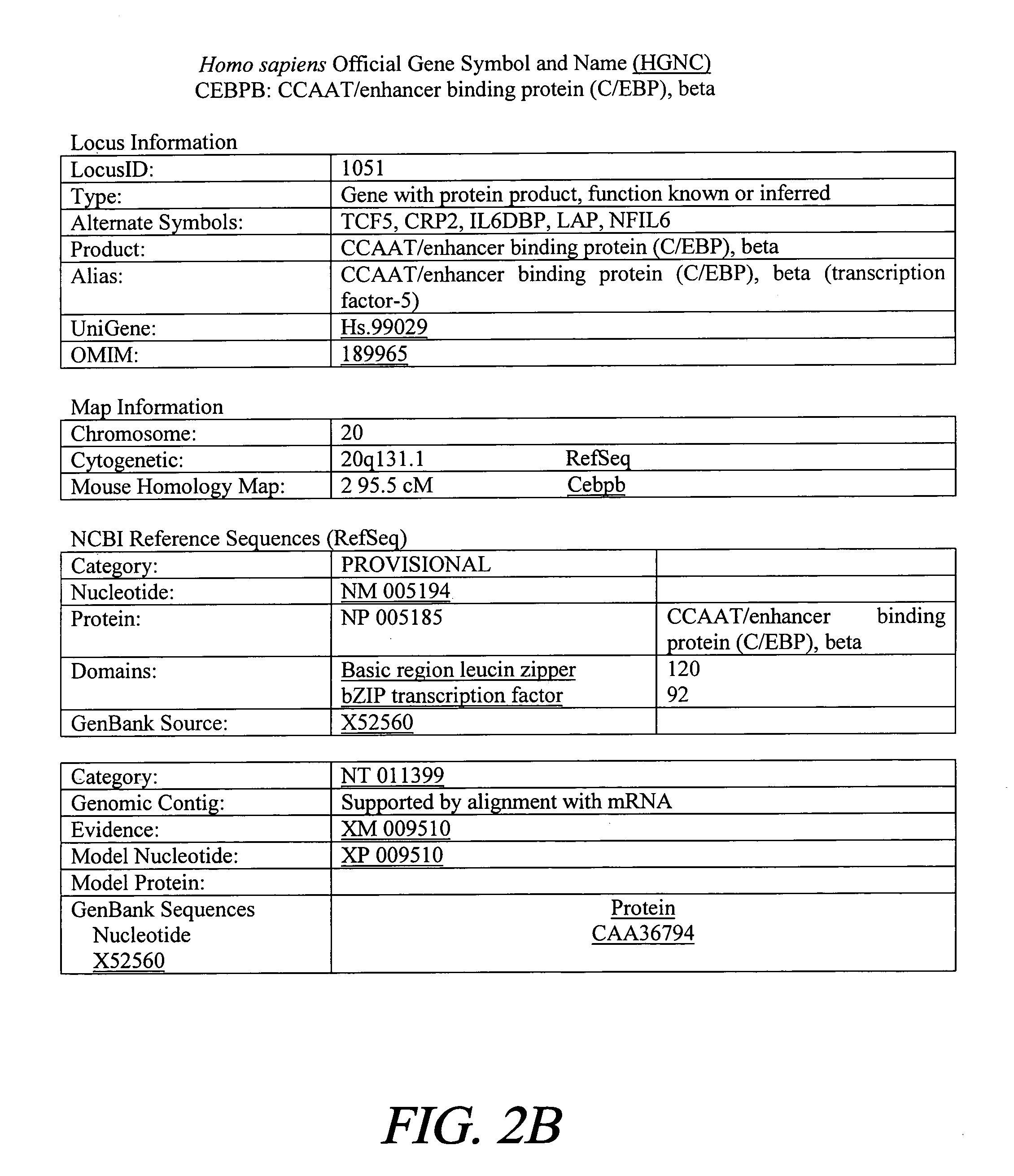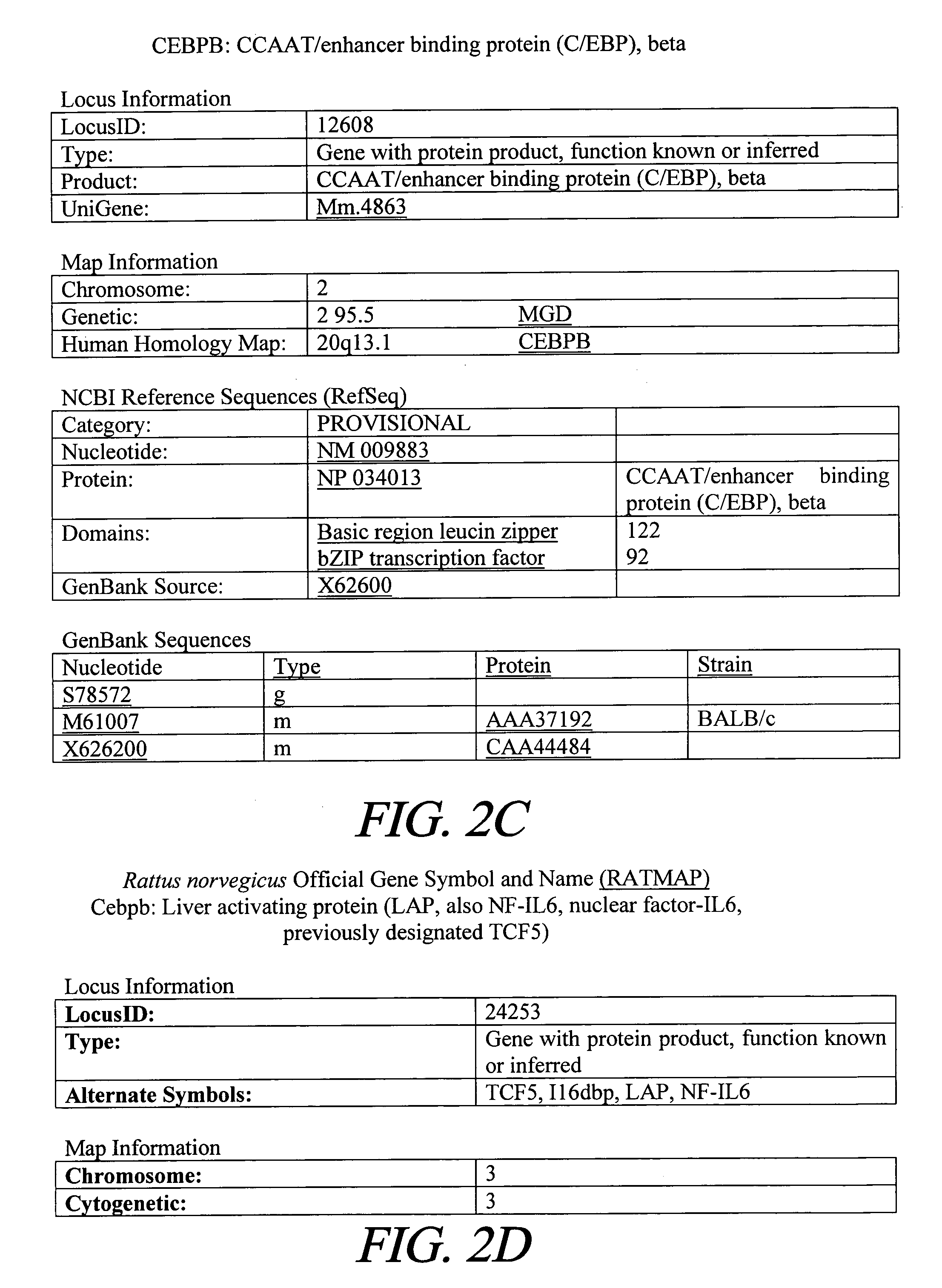Treatment of inflammation with p20
a technology of p20 and inflammation, applied in the field of inflammation, can solve the problems of destroying malfunction or destruction of vital cells and tissues, and high dose corticosteroid therapy itself dangerous with numerous deleterious side effects, and achieves enhanced inflammation resolution, increased expression, and increased indicators.
- Summary
- Abstract
- Description
- Claims
- Application Information
AI Technical Summary
Benefits of technology
Problems solved by technology
Method used
Image
Examples
example 1
Materials and Methods
[0318]Human Macrophage Cell Line
[0319]This line is obtained from ATCC and is designated U-937. This is a human histiocytic lymphoma cell line and is one of the few human cell lines still expressing many of the monocyte-like characteristics exhibited by cells of histiocytic origin. The cells are readily cultured in RPMI.
[0320]Normal Primary Human Bronchial Epithelial Cells
[0321]The inventors purchase primary human bronchial cells obtained from a normal human subject from Clonetics (San Diego, Calif.). The cells are maintained in LHC8 medium.
[0322]Primary Human Lung Fibroblasts (Normal and IPF)
[0323]The inventors have collected, cultured and frozen away lung fibroblasts obtained from 7 patients with IPF and 12 normal lungs. The inventors have early passage specimens available from all of these lines.
[0324]Transformed Normal and CF Human Bronchial Epithelial Cells
[0325]The inventors will use transformed human bronchial epithelial cells which express wild-type cysti...
example 2
[0334]This example demonstrates attenuation of TNFα or IL-1β stimulated production of IL-6 and IL-8 in cell lines relevant to human lung diseases by transfection of a plasmid expression vector containing the gene encoding p20 driven by a CMV promoter (pCMVp20). Cell lines studied include: a human macrophage line, primary and transformed normal human bronchial epithelial cells, transformed human bronchial epithelial cells expressing the cystic fibrosis defect, primary normal human lung fibroblasts, and primary lung fibroblasts from humans with idiopathic pulmonary fibrosis. These cell lines are transfected with pCMV-p20-His (which contains a histidine epitope tag for characterization of expression, see FIG. 11A and Example YYY), pRSV-luc (a control plasmid which expresses the luciferase gene), or no vector. The transfections are carried out in this example using cationic liposome mediated DNA delivery. The expression of p20 by Western blots and immunofluorescence (with a fluorescent ...
example 3
[0338]This example describes methods for delivering the p20 protein intra-cellularly using a liposome delivery system. Delivery of the p20 protein by this method results in the attenuation of TNFα or IL-1β stimulated production of IL-6 and IL-8 in the following cells: a human macrophage line, primary and transformed normal human bronchial epithelial cells, transformed human bronchial epithelial cells expressing the cystic fibrosis defect, primary normal human lung fibroblasts, and primary lung fibroblasts from humans with idiopathic pulmonary fibrosis.
[0339]Without being bound to this mechanism, the inventors believe that delivery of the p20 protein into the cytoplasmic compartment of a cell (transfer across the cytoplasmic membrane) results in the subsequent transfer of the p20 protein into the nuclear compartment of the cell because p20 contains nuclear localization signals and normally exists predominantly in the nucleus. Also without being bound to mechanism, the inventors belie...
PUM
| Property | Measurement | Unit |
|---|---|---|
| molecular weight | aaaaa | aaaaa |
| time | aaaaa | aaaaa |
| molecular weight | aaaaa | aaaaa |
Abstract
Description
Claims
Application Information
 Login to View More
Login to View More - R&D
- Intellectual Property
- Life Sciences
- Materials
- Tech Scout
- Unparalleled Data Quality
- Higher Quality Content
- 60% Fewer Hallucinations
Browse by: Latest US Patents, China's latest patents, Technical Efficacy Thesaurus, Application Domain, Technology Topic, Popular Technical Reports.
© 2025 PatSnap. All rights reserved.Legal|Privacy policy|Modern Slavery Act Transparency Statement|Sitemap|About US| Contact US: help@patsnap.com



